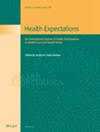Challenges and Opportunities in Delivering and Providing Culturally and Linguistically Tailored Cardiovascular Disease and Stroke Prevention Education: A Qualitative Exploratory Study
Abstract
Background
Cardiovascular disease (CVD) and stroke disproportionately affect culturally and linguistically diverse (CALD) communities, where access to prevention programmes is often limited by cultural, language, and systemic barriers. Understanding the experiences of healthcare professionals and nongovernment organisations in delivering and providing education to these communities is essential for developing effective, culturally tailored strategies that support equitable cardiovascular outcomes.
Objectives
To explore (i) healthcare professionals', key health networks' and non-government organisations' experiences of delivering CVD or stroke prevention education; (ii) the context i.e., barriers and enablers to delivering education; and (iii) and identify core components and ideal approach to deliver a CVD and stroke prevention education and behaviour change programme for CALD communities.
Design
A qualitative exploratory study using semi-structured interviews. Deductive thematic analysis was completed using NVivo 15.
Setting and Participants
Fourteen participants were recruited and interviewed via Zoom; seven cardiovascular and stroke healthcare professionals and seven representatives from a range of federal- and state-level cardiovascular and stroke nongovernment organisations and multicultural health networks.
Results
Two key themes were identified: (1) challenges when providing and delivering culturally and linguistically tailored education and (2) components of an ideal education programme. Challenges in delivering CVD and stroke prevention education include the need to navigate diverse cultural health beliefs and worldviews, limited access to qualified interpreters and a lack of culturally relevant and translated resources. An ideal education programme was considered one that is simple, evidence-based, culturally appropriate, and delivered in accessible, preferred formats. Key to sustained behaviour change beyond the programme are family and community engagement, the use of codesign approach to foster ownership and relevance from the inception, trust-building, and ongoing reinforcement of educational content through reminders.
Discussion and Conclusion
While systemic barriers such as interpreter shortages and limited funding persist, engaging families, empowering individuals, tailoring delivery methods, and embracing community-specific strategies offer clear pathways for improving engagement and reach of CVD and stroke prevention education. Incorporating these components, particularly through codesign, will be essential in ensuring equitable cardiovascular outcomes for people from CALD communities.
Patient or Public Contribution
Adults with lived experience of cardiovascular disease and stroke were engaged during the conceptualisation of this study through informal discussions. Clinicians and representatives from end-user organisations were involved as participants in the study.


 求助内容:
求助内容: 应助结果提醒方式:
应助结果提醒方式:


